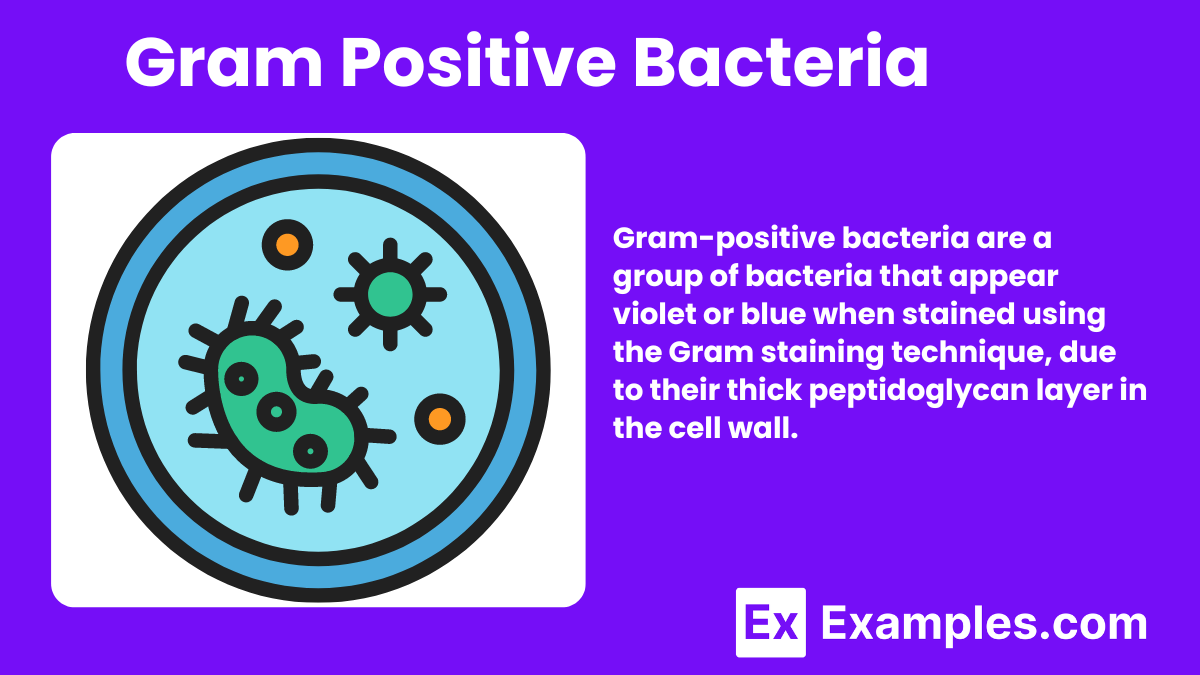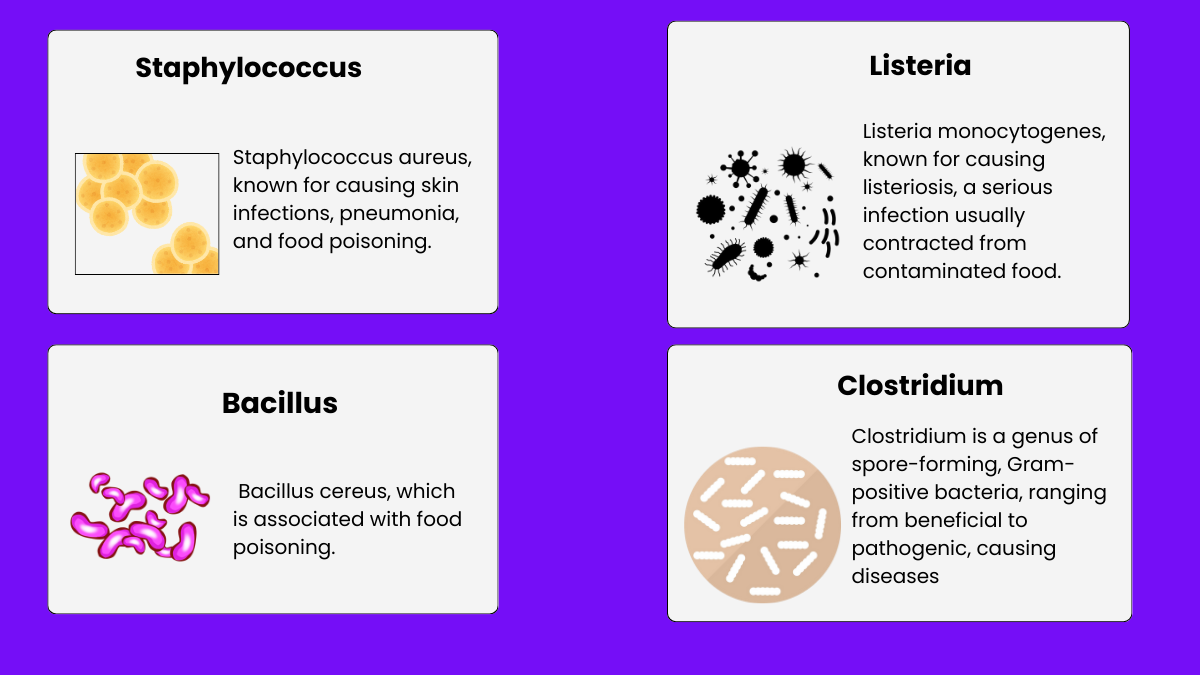Which of the following bacteria is Gram-positive?
Escherichia coli
Staphylococcus aureus
Pseudomonas aeruginosa
Salmonella typhimurium

Gram-positive bacteria are a category of bacteria that appear violet or blue when stained using the Gram staining technique, a method developed by Hans Christian Gram. This staining response is due to the thick layer of peptidoglycan in their cell walls, which retains the crystal violet stain used during the process. In contrast to Gram-negative bacteria, which have a thinner peptidoglycan layer and an outer membrane, Gram-positive bacteria lack this outer membrane and display different properties and responses to antibiotics. Gram-positive bacteria are diverse, including both beneficial and pathogenic species. Beneficial ones are crucial in processes like fermentation and decomposition, while pathogenic strains can cause serious diseases such as pneumonia, strep throat, and food poisoning. Their structural simplicity relative to Gram-negative bacteria often makes them more susceptible to antibiotics that target cell wall synthesis.
Understanding these characteristics is crucial for the study of bacterial infections, the development of antibiotics, and the exploration of beneficial bacteria’s roles in various industries and natural processes.
Gram-positive bacteria, despite being often associated with various infections and diseases, also play numerous beneficial roles in both environmental ecosystems and human health. Here are some of the key benefits of Gram-positive bacteria:
In summary, Gram-positive bacteria offer a wide array of benefits that underscore their importance beyond their role as pathogens. Their contributions to environmental health, agriculture, industry, and medical science highlight the diversity and significance of these microorganisms in supporting life and human society.

Gram-positive bacteria encompass a diverse group of organisms classified based on their thick peptidoglycan cell wall layer, which retains the crystal violet stain during the Gram staining process. They are broadly categorized into two main groups based on their shape: cocci (spherical) and bacilli (rod-shaped). Each group includes several genera that are important both clinically and environmentally. Here’s an overview of the types of Gram-positive bacteria:
This classification highlights the diversity within Gram-positive bacteria, encompassing both harmful pathogens and beneficial organisms with wide-ranging roles in health, industry, and the environment.
Gram-positive bacteria can be both safe and harmful. Many species are beneficial and play crucial roles in our environment, health, and industry, such as those involved in fermentation processes or used as probiotics. However, some Gram-positive bacteria are pathogenic and can cause a range of diseases in humans and animals.
Staphylococcus aureus is a prime example of harmful Gram-positive bacteria, capable of causing a wide array of conditions from minor skin infections to life-threatening diseases like sepsis and MRSA infections.
Both Gram-positive and Gram-negative bacteria can be harmful. The pathogenicity depends on the specific bacteria and the conditions under which they are encountered by humans. Each group includes bacteria capable of causing diseases in humans and animals.
The harm caused by Gram-positive vs. Gram-negative bacteria cannot be broadly categorized, as both include highly pathogenic species. However, Gram-negative bacteria are often considered more resistant to antibiotics due to their outer membrane, which can make infections more challenging to treat.
Escherichia coli (E. coli) is among the most well-known and common Gram-negative bacteria. While many strains are harmless and part of the normal gut flora, others can cause food poisoning, urinary tract infections, and other more serious conditions.
Text prompt
Add Tone
10 Examples of Public speaking
20 Examples of Gas lighting
Which of the following bacteria is Gram-positive?
Escherichia coli
Staphylococcus aureus
Pseudomonas aeruginosa
Salmonella typhimurium
Gram-positive bacteria stain which color in the Gram stain procedure?
Red
Green
Purple
Yellow
Which structure is most prominent in Gram-positive bacteria?
Outer membrane
Thin peptidoglycan layer
Thick peptidoglycan layer
Periplasmic space
Which of the following antibiotics is most effective against Gram-positive bacteria?
Penicillin
Ciprofloxacin
Tetracycline
Metronidazole
Which of these Gram-positive bacteria is a common cause of sore throat?
Streptococcus pyogenes
Escherichia coli
Neisseria gonorrhoeae
Klebsiella pneumoniae
Which component is absent in the cell wall of Gram-positive bacteria?
Peptidoglycan
Teichoic acid
Lipopolysaccharide
N-acetylmuramic acid
Gram-positive bacteria lack which of the following?
Peptidoglycan
Cell membrane
Ribosomes
Outer membrane
Which Gram-positive bacterium is known for causing food poisoning?
Bacillus cereus
Escherichia coli
Vibrio cholerae
Salmonella enterica
The genus Clostridium includes Gram-positive bacteria that are:
Obligate aerobes
Obligate anaerobes
Facultative anaerobes
Microaerophiles
Which Gram-positive bacterium is commonly found on the skin and can cause infections?
Lactobacillus acidophilus
Staphylococcus epidermidis
Pseudomonas aeruginosa
Enterococcus faecalis
Before you leave, take our quick quiz to enhance your learning!

